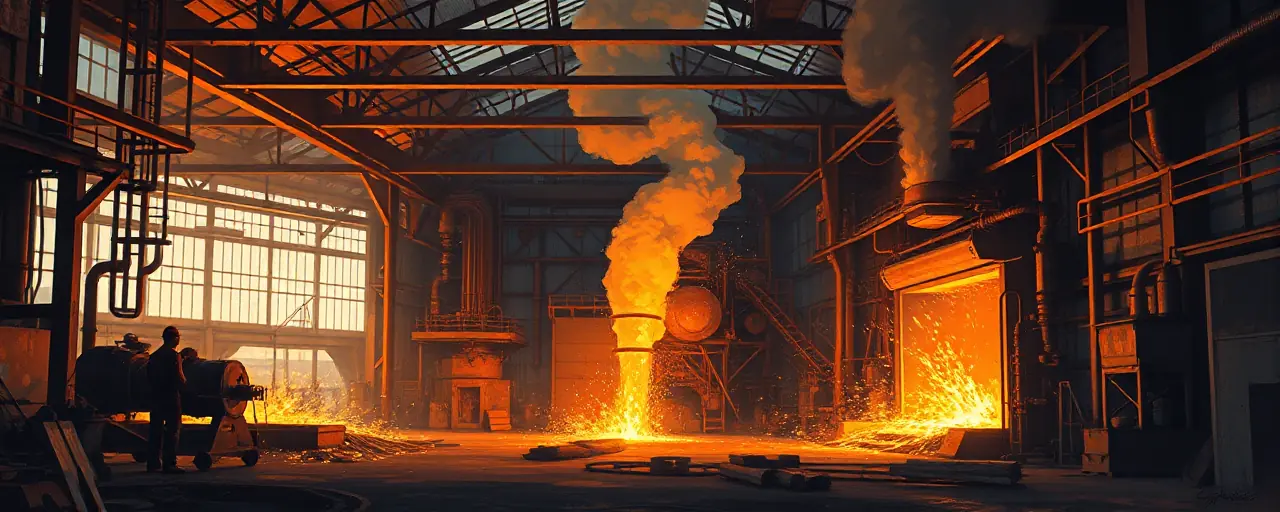A Bold Move on Trade
President Donald Trump’s latest trade policy has thrust tariffs back into the spotlight, targeting foreign steel and aluminum imports with a promise to rejuvenate American manufacturing. Unveiled in early 2025, the measures echo strategies from his first term, aiming to shield domestic industries from overseas competition. Factory owners and workers across the Rust Belt see hope in the plan, banking on a surge of hiring and a stronger industrial backbone for the nation.
Yet the decision lands amid a tangle of economic pressures, from rising consumer prices to supply chain snags. While some hail the tariffs as a lifeline for American jobs, others point to a complex reality where higher costs and global trade tensions could muddy the gains. The stakes are high for a sector that’s been battered by decades of globalization, leaving everyday people eager to understand what this means for their wallets and communities.
Voices From the Factory Floor
Drew Greenblatt, CEO of Marlin Steel Wire Products in Baltimore, stands firmly behind the tariffs. His company, with plants in Indiana and Michigan too, relies on American steel and labor. He argues that competing against heavily subsidized foreign industries, like those backed by the Chinese government, puts U.S. firms at a disadvantage. Level the playing field, he told CBS Morning News, and factory workers could see a real shot at climbing out of poverty into steady, well-paid jobs.
Greenblatt’s optimism carries weight for those rooting for a manufacturing comeback. He predicts a hiring boom, with his own firm poised to add staff as sales climb. On CNN, he painted a vivid picture of factories ramping up, offering paychecks that could transform lives. Still, not every business shares his rosy outlook; many grapple with the flip side of tariffs, higher raw material costs that squeeze profits and force tough choices.
The Economic Ripple Effect
Data from early 2025 shows a mixed bag. Auto manufacturing wages have ticked up 6.1% to $31.84 an hour, a sign that some sectors are adjusting to the new landscape. But job growth remains sluggish, with factory employment expected to inch up by just 0.8 percentage points this year. Automation is plugging labor gaps, yet it demands training that not all workers can access. Meanwhile, the U.S. tariff rate has spiked to 22.5%, the highest in over a century, driving a 2.3% jump in consumer prices.
Households feel the pinch, losing an average of $3,800 annually as goods get pricier. Lower-income families bear the brunt, with losses starting at $980, while wealthier ones face hits up to $8,100. Economists note a 0.9-point dip in GDP growth, a trade-off for protecting domestic industries. Across the Atlantic, Europe and Japan have slapped retaliatory tariffs on American exports, complicating the picture for U.S. manufacturers aiming to sell abroad.
Lessons From the Past
History offers clues on what might unfold. High tariffs in the late 19th century propped up U.S. industries but often left them less efficient, lagging behind global rivals. Fast forward to the early 2000s, and import competition from China wiped out over 2 million manufacturing jobs in a decade. Trump’s first-term tariffs on steel sparked similar debates; they bolstered some producers but hiked costs for industries like construction and automotive, leaving small businesses scrambling.
Today’s push builds on recent wins, like the CHIPS Act boosting semiconductor production. Advocates say pairing tariffs with tax credits could spark a manufacturing renaissance. Yet skeptics warn of a repeat: short-term gains overshadowed by long-term headaches, from supply chain chaos to trade wars. The tension lies in balancing protection with competitiveness, a puzzle policymakers have wrestled with for generations.
Weighing the Trade-Offs
For factory towns, the tariffs stir a fragile hope of revival. Supporters argue they could rebuild a middle class hollowed out by decades of offshoring. Greenblatt’s vision of bustling plants and fatter paychecks resonates with workers tired of scraping by. On the flip side, rising costs threaten to erode those gains, hitting consumers and businesses alike. The regressive bite of higher prices worries analysts tracking economic inequality, who see low-income households losing ground.
The bigger question lingers: can tariffs deliver lasting prosperity? Manufacturing revenues are set to grow 4.2% this year, fueled by reshoring and tech investments. But challenges, a skills gap, pricey inputs, and global pushback, loom large. As the policy plays out, its success hinges on execution, from training programs to navigating trade spats, leaving plenty of uncertainty for the people it aims to lift.
